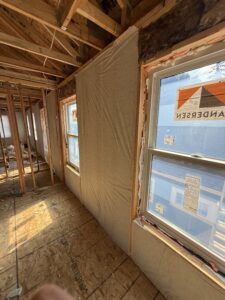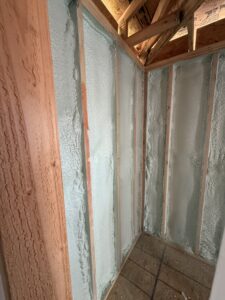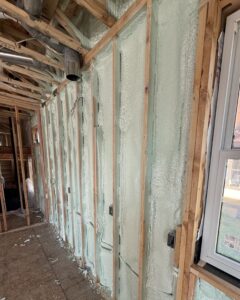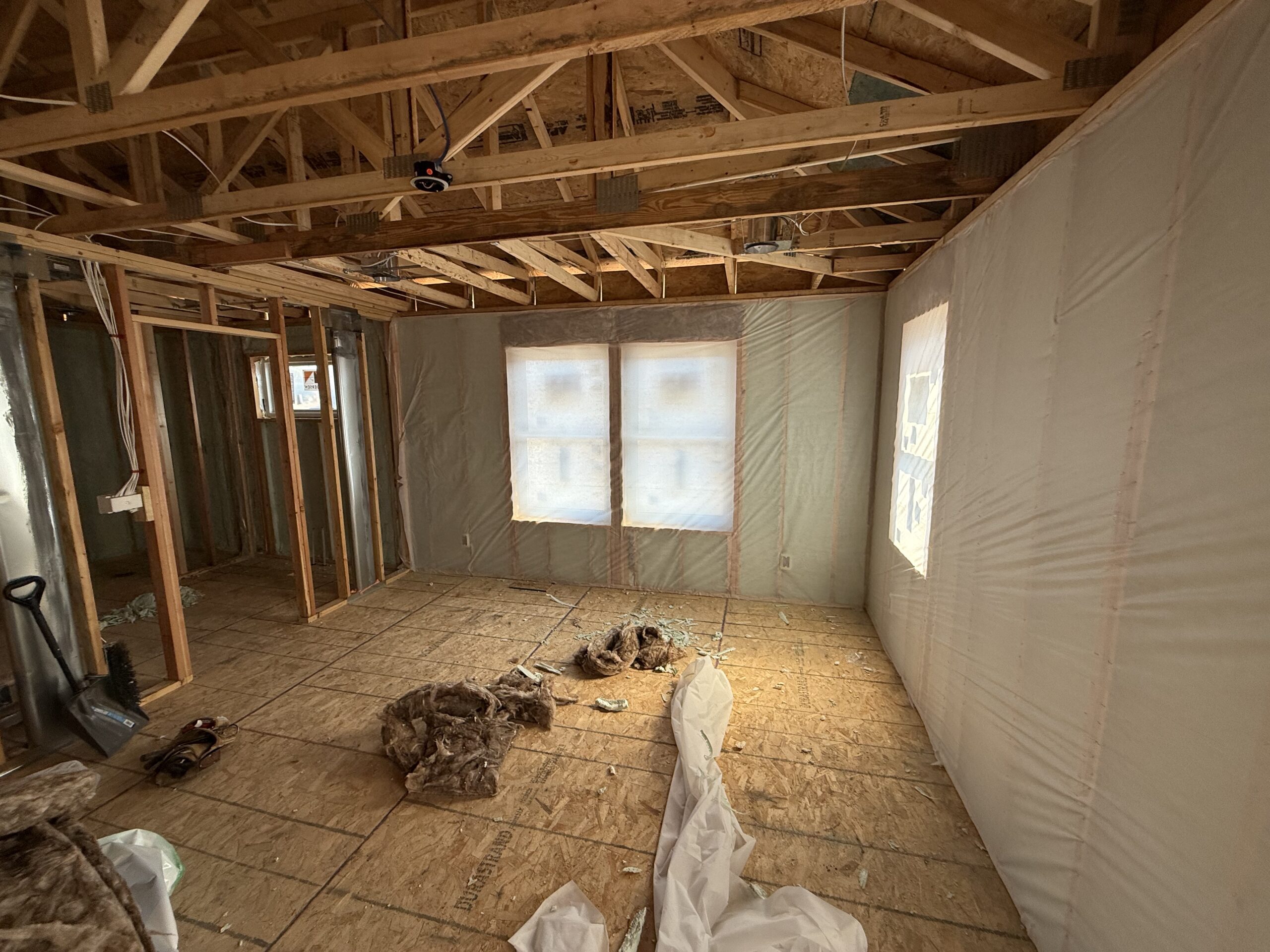Insulation is being installed in the Minneapolis build by Icon Homes. The 2 lb closed-cell spray foam is installed, and the netting for the blown insulation is being fitted. The fiberglass batts visible on the floor are for the header areas where the 2 lb closed-cell spray foam did not fill the space. The header area is too small volume-wise for the blown-in insulation, so fiberglass batting is used.

In this upper-floor bathroom, 4″ of 2 lb closed-cell spray foam is used to prevent any moisture issues behind the shower wall. The R-29 chamber insulation, combined with the R-14 EcoSmart Stud, yields an effective R-value of approximately R-24 once all insulating elements of the wall are accounted for. That is close to double the effective insulation value of solid 2×6 studs with R-20 batts. The wall is completely sealed against air infiltration, along with all the other walls. Also, the outside energy corner is completely sealed and reinforced. Our diagram illustrates what the interior would look like if you could cut the wall open to take a look.


Notice in the picture that there are no vapor boxes in the outer wall. The 2″ of 2 lb closed cell spray foam is not only a seal against air infiltration into the insulation. It is also the vapor seal for the home. The bonus here is that the wall can breathe into the inside of the house. Water vapor can move into the interior side of the wall. It is stopped by the 2 lb closed-cell spray foam and released back into the home—eliminating the risk of getting trapped in the wall by a plastic vapor barrier. The outside of the wall, with the building paper and rain screen installed, can shed moisture to the outside, eliminating the risk of getting trapped between the sheathing and rigid foam insulation boards used for exterior continuous insulation.

More updates to follow as this home moves quickly along.
